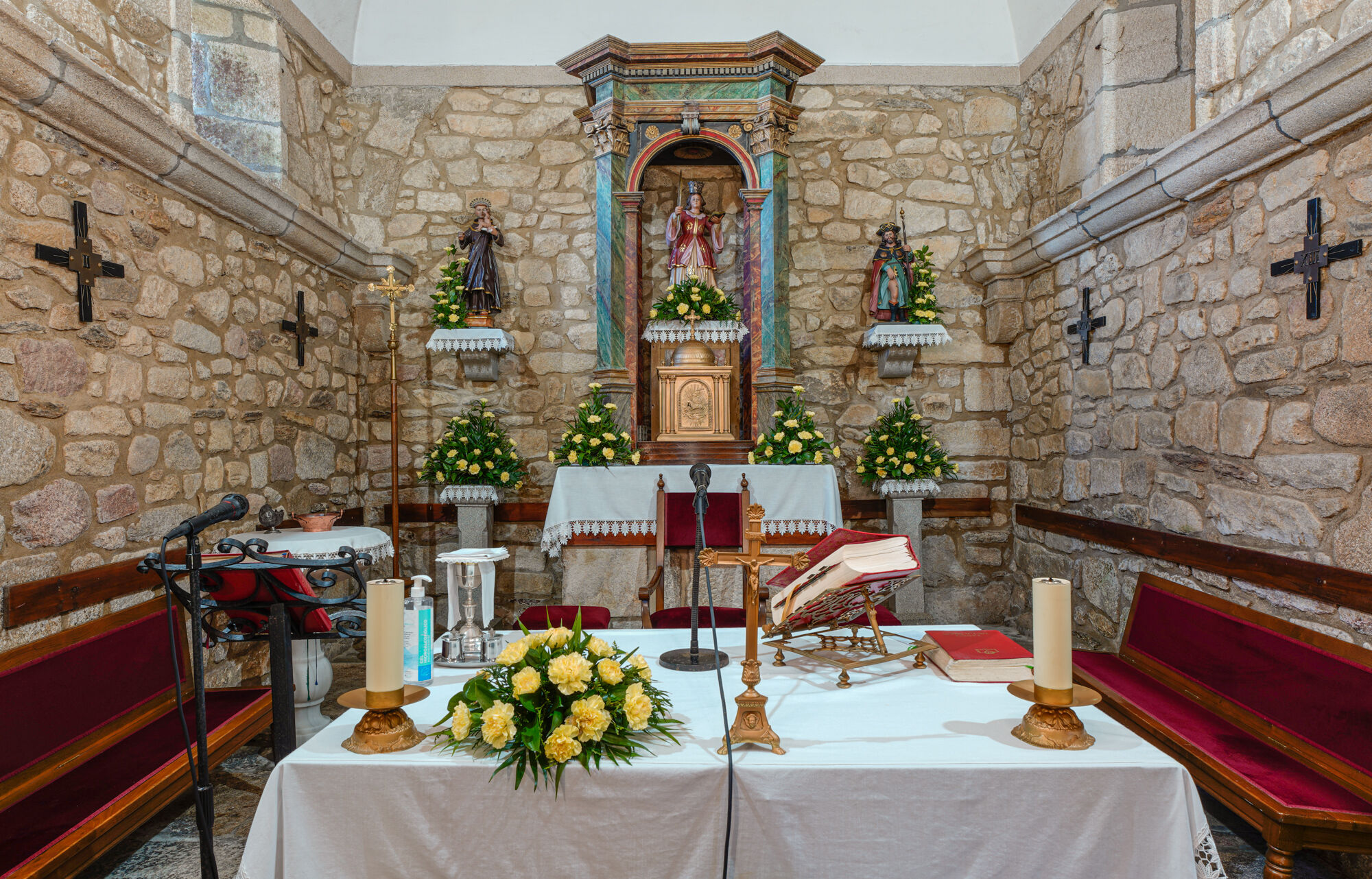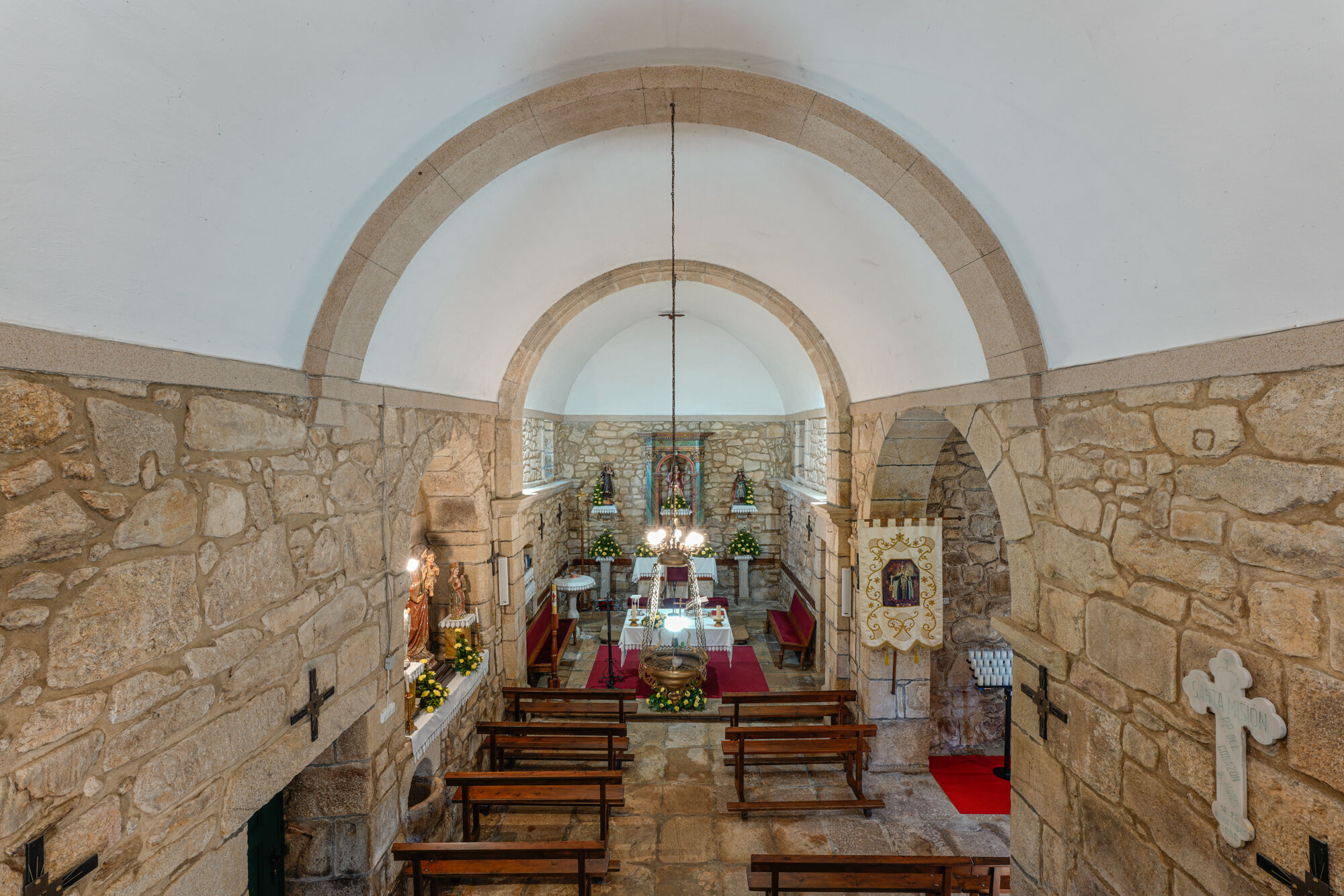Church of Santa Eulalia de Pardemarín:
A Legacy Between Romanesque and Neoclassical

There are places that, no matter how many years go by, remain anchored in our memory. The Church of Santa Eulalia de Pardemarín is one of those spaces for me. It was there, for example, that my parents got married, and it was a point of reference for most of my life. Always present in the village landscape, it became part of people's daily lives and their stories. This is why I decided to capture it like never before, exploring every corner with a fresh perspective and preserving in images the essence of a temple that, over the centuries, has been shaped by time and by the hands that built and restored it.

.

A Blend of Styles with a Medieval Past

.

.

The building features a single nave with a rectangular apse and a quadrangular annex on the southern side, added later to increase capacity. The main doorway, lintelled and framed by a recessed molding, is notable for its pronounced keystone and an impost line running across the facade. Above it, a semicircular arched niche houses an image, while the structure is crowned by a central belfry with two openings. The smooth lateral walls are topped with a molded cornice.

.

.


.

.

Romanesque Traces: A Past Carved in Stone
The presence of reused Romanesque elements suggests the existence of an earlier temple. Outside, a large, heavily eroded vegetal capital remains, featuring prominent, possibly pointed and volute-shaped leaves. A fragment of archivolt embedded in the north wall is adorned with balls between worn moldings. The walls also display various mason’s marks and carved symbols, such as a pair of double circles in relief and a larger circumference surrounded by others.

.

.

It has an interesting Romanesque baptismal font currently serves as an altar, and three stone holy water fonts welcome the faithful at each of the temple’s entrances.

.

.

A staircase to the right of the main entrance leads to the gallery, an elevated area from which the faithful can follow religious services. It is also, through a small door, the access point to the bell tower.

The Bells: Witnesses of Time
The church’s bells also tell a story. The largest, cast in 1903 by J. Liste in Orazo, bears the inscription JHS MARIA Y JOSÉ AÑO DE 1903. The smaller one, dating back to 1780, is dedicated to Saint Barbara and Saint Eulalia of Pardemarín, with an inscription mentioning the abbot of that time.
The roof was renovated in 2002, and the wooden bell structures were replaced in 2003.

Photography as a Tool for Preservation
Photos: ©Juan Carlos Asorey
Sources: Tabeirós Montes (tabeirosmontes.com) and Románico Digital (romanicodigital.com).
Professional photography can make a difference in how your projects are perceived. If you want images that convey professionalism, quality, and impact, I’m here to help. Get in touch, and let’s see how we can bring your vision to life through photography.
